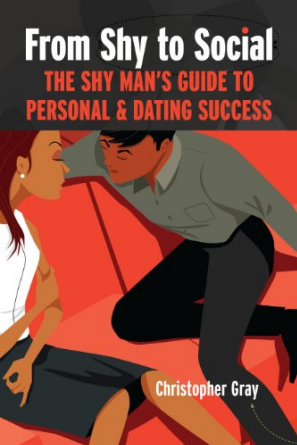Print Edition: February 8, 2012
 “This book,” states Christopher Gray in the preface to his guide, “is a comprehensive plan detailing the methods I used to change from being extremely self-conscious around women I was interested in, to someone who could confidently initiate conversation with women under almost any conditions.” It promises to make the reader, “the better man you want to be, while opening up new social avenues for meeting women who will help you find satisfaction and happiness.”
“This book,” states Christopher Gray in the preface to his guide, “is a comprehensive plan detailing the methods I used to change from being extremely self-conscious around women I was interested in, to someone who could confidently initiate conversation with women under almost any conditions.” It promises to make the reader, “the better man you want to be, while opening up new social avenues for meeting women who will help you find satisfaction and happiness.”
Now immediately I would ask said catalysts of this satisfaction and happiness—women—to stop reading. The whole point of the book is to persuade the estrogen-inclined into providing “satisfaction,” and it would be deeply unfair if you were wise to all our tricks before we (the testosterone-inclined) even tried them. Remember that, at least for the purpose of this work, you are like carefree, prancing gazelle on the African savannah, and we are like starving, lust-crazed cheetahs, anxiously developing our plan to stalk through the long grasses, separate you from the rest of the herd, and possibly obtain your phone-number. So stop reading. Trust me, it’s better this way.
Now men, there are two immediate things to know about this book. First of all it’s called the Shy Man’s Guide. This is important. If you are not shy, then this book is going to have a limited application to your situation. It can help your “approach” (this will be defined later), but it will not teach you when to shut up and be sensitive (which would probably be more useful). Secondly, this book is a guide to Personal & Dating Success, which means its premise extends beyond simply stringing together a sweaty series of one night stands. At least in theory.
The first half of Gray’s book is therefore devoted to making shy guys social. It encourages them to get out more, develop new interests and proposes “assignments” to encourage their development (contribute to a forum online, volunteer at a charity organization, engage in personal hygiene, etc.). It encourages those who, like Gray, suffer from social anxiety to confront their destructive tendencies or perspectives and attempt to correct them. This is the good part of the book.
The second half of Gray’s work is about the aforementioned gazelles and cheetahs. It’s about taking these liberated shy guys and releasing them upon the innocent female population. Gray gives advice on everything from online dating profiles (no nude shots, no mirror/cellphone shots, no texting language) to creating engaging conversation (don’t ask what they do, don’t interrupt with “I did that too!” and consider memorizing witty anecdotes for emergencies). Much of his advice is on the topic of “approaching” women in public situations. Grey’s analysis is intensely mechanical. He dissects hypothetical interactions on the bus, in the gym, at the supermarket and evaluates potential icebreakers, conversation topics and psychological cues. The assignments become more challenging (Assignment #7: Approach 50 Women in 10 Days!), and Gray begins to relate personal conquests as valuable learning experiences. A chapter is devoted to the evaluation of concepts such as “wingman” and “pick up artist,” and another to a rather abbreviated discussion on female psychology. This half of the book is possibly in need of some cross-gender editing.
“Women,” as Gray states unequivocally, “make decisions based on feelings rather than logic. If she decides you are not the one for her, no matter the cause, you could recruit a team of the world’s greatest thinkers and philosophers, led by the spirit of Socrates, and they would still fail to change her mind.”
I feel that this is a statement that Gray, in his boundless quest to understand and manipulate the female mind, should not have committed to print. I base this conclusion upon my mother’s reaction to the quote; she responded with the profound feeling that the best use of Gray’s guide would be as projectile hurtling through a window. Women, in my limited understanding, do not respond positively to the assertion that they feel rather than think, which is why I told them all to stop reading in the second paragraph.
Anyway, I would consider Gray’s work a compelling rallying point for those men who do experience extreme shyness or anxiety, with many useful tips to help improve their ability to interact with society. I would respectfully decline to recommend it as guide to dating success, as I feel Gray’s advice is less likely to inspire confidence than a subtle paranoia. Are you walking assertively? Gray demands to know. Are you maintaining eye contact? Have you forgotten to imply a false time constraint, or hinted, by smiling oddly, that you are probably a convicted felon?
Do you want to be forever alone?

